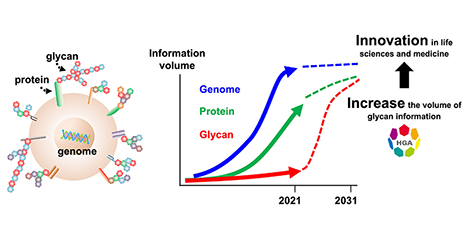Glycans are essential biomolecules that participate in a broad spectrum of biological processes, including protein stabilization, intracellular trafficking and localization, cell adhesion, intercellular communication, and signal transduction. In contrast to nucleic acids and proteins, glycans are synthesized and degraded in a stepwise, non-template-driven manner through the coordinated actions of multiple glycosyltransferases and glycosidases. Their structural diversity—encompassing various isomers and charged residues—renders glycan analysis technically challenging, requiring sophisticated analytical techniques and specialized expertise. Consequently, it remains difficult to determine which glycan structures are synthesized in specific cells or tissues. To address these challenges, we developed GlycoMaple, a user-friendly platform for visualizing glycan metabolic pathways. Leveraging transcriptomic data derived from RNA sequencing analysis of cells or tissues, GlycoMaple enables users to predict the repertoire of glycans likely to be synthesized. Moreover, by comparing datasets across multiple samples, the tool facilitates the identification of differences in glycan metabolic profiles. GlycoMaple serves not only as a valuable complement to experimental glycomics but also as a versatile resource for applications such as glycoengineering and the discovery of disease-associated glycan markers. In this review, we describe the development of GlycoMaple, highlight its features and functionalities, showcase representative applications, and discuss future directions. ...and more
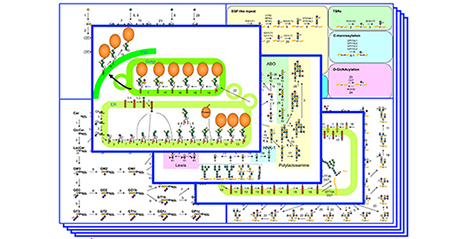
Glycan structural analysis using HPLC mapping enables the quantitative analysis of complex glycan structures while distinguishing isomers, playing an essential role in the Human Glycome Atlas Project. This article introduces the fundamental principles and applications of HPLC mapping, with a focus on its integration with mass spectrometry and the utilization of the "GALAXY" database for methods of identifying glycan structures. This technique significantly contributes to the acceleration of glycan research and the refinement of the human glycan map. ...and more
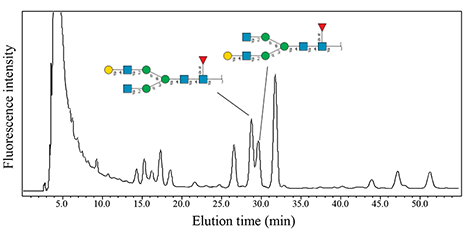
Standardized analytical methods have been established for genome and proteome analyses, enabling large-scale studies such as whole-genome analyses and comprehensive protein profiling, which have revealed associations with major diseases. Meanwhile, the development of analytical platforms for glycan profiling by the Human Glycome Atlas Project has made it possible to conduct glycomics studies on large populations. This review introduces the new possibilities and expectations that large-scale glycome data obtained from cohort studies of healthy and diseased individuals may bring to glycoscience and the life sciences more broadly. ...and more
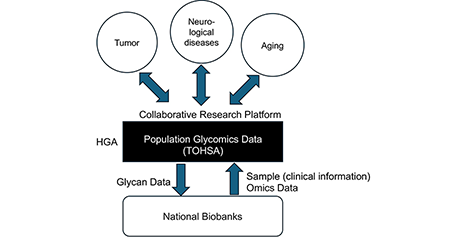
The Human Glycome Atlas (HGA) project is a collaborative effort between the Institute for Glyco-core Research (iGCORE) at Nagoya University, the Exploratory Research Center on Life and Living Systems (ExCELLS) at the National Institutes of Natural Sciences, and the Glycan and Life Systems Integration Center (GaLSIC) at Soka University. Our aim to elucidate the glycans and biosynthetic mechanisms in humans. This paper provides an overview of the Knowledgebase TOHSA being developed by HGA Segment 4 (TOHSA Development Unit). ...and more

Elucidating the pathological mechanisms of Alzheimer’s disease (AD), the most common form of dementia, and developing new methods for its early detection are crucial. In this review, the known relationships between AD and glycans are presented with a particular focus on comprehensive glycan analysis and the roles of specific glycans in AD. Summarizing these studies, the potential development of glycan-targeted diagnostic and therapeutic approaches for AD are discussed. ...and more
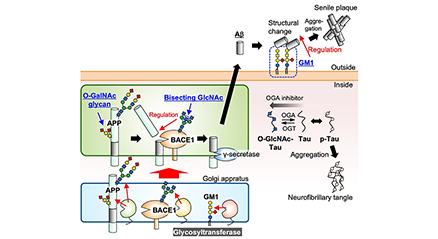
In segment 2 of the Human Glycome Atlas Project (HGA), we are aiming for the comprehensive analysis of N-, O-, and glycosphingolipid (GSL)-glycans, glycosaminoglycans (GAG), and free oligosaccharides, the generation of a human glycome catalog (total human plasma glycome), and the construction of resulting knowledgebase called TOHSA. In this section, we introduce the glycomic techniques used to elucidate the GSL-glycome in human serum and plasma. ...and more
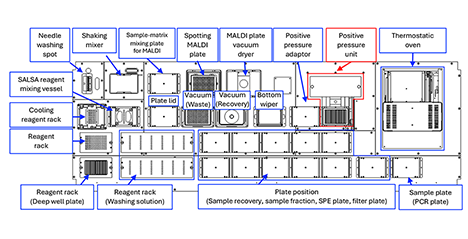
In segment 2 of the Human Glycome Atlas Project (HGA), the generation of a large-scale human glycome catalog (total human plasma glycome) is one of the most important missions for constructing a database called TOHSA. In this section, we introduce our latest studies, including sample preparation for the analysis of O-glycans in human plasma/serum. ...and more
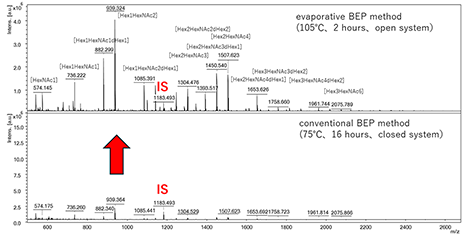
The Human Glycome Atlas Project (HGA), which launched in April 2023, aims to perform glycoproteomics on a large cohort of samples, using a detailed human glycan map as a reference, to create a catalog of human glycans related to disease. During the first 5 years of the project, the focus will be on dementia and aging, and 20,000 samples mainly from plasma and serum will be analyzed. In the following 5 years, the scope will be broadened to include various diseases, and 200,000 samples will be targeted for analysis. Our goal is to establish and fully automate a global standard method for analyzing glycoproteomics profiles, enabling the large-scale analysis of glycan structures and the collection of comprehensive glycan data. ...and more
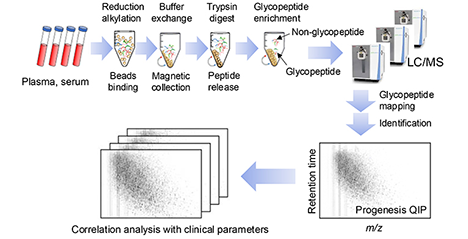
Although glycan structures themselves do not directly depend on template information, their synthesis depends on glycan-related genes, including glycosyltransferases and their protein products. These glycan-related genes are thought to be affected by genomic mutations, DNA methylation, transcription factors, and splicing defects. The susceptibility of proteins to glycosylation may also be altered if the protein sequence contains mutated sequences. However, there are significant technical gaps in the integrated analysis. Although sequencing allows spatiotemporal analysis at the single-cell level, genome-wide integrated analysis at the single-cell level is feasible but not easy to achieve using mass spectrometry. Current glycan analysis technology is limited to probing with glycan-specific antibodies and glycan-binding proteins (GBPs) (lectin, etc.), making it difficult to elucidate biological glycan formation mechanisms at the single-cell level using glycomics alone. Therefore, integrated analysis using single-cell sequencing technology is necessary to understand the mechanism of abnormal glycosylation at the single-cell level. ...and more
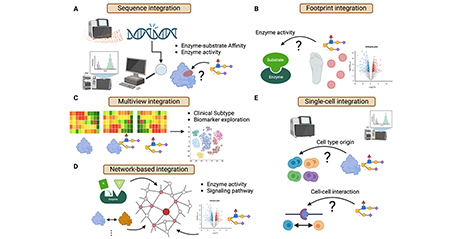
In segment 2 of the Human Glycome Atlas Project (HGA), the generation of a large-scale human glycome catalog (total human plasma glycome) is one of the most important missions to construct a database called TOHSA. In this section, we introduce our latest studies, covering 2) the improved analysis of N-glycans by a glycoblotting method in combination with sialic linkage-specific derivatization to distinguish sialylated glycan isomers, and 3) the development of an automated N-glycan preparation instrument for large-scale glycomic analysis of human plasma/serum. ...and more
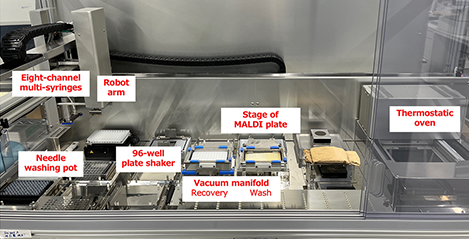
In April 2023, the Human Glycome Atlas (HGA) Project was started within the framework of the Large-Scale Academic Frontier Promotion Project sponsored by the Ministry of Education, Culture, Sports, Science and Technology of Japan. The HGA Project advocates for the scientific goal of “Clarifying the Truth of the Extended Central Dogma” and has four strategic segments planned to attain this goal. First, the mission of Segment 1 is to “acquire information on human glycan structures at the glycoproteome level”. Glycans are diverse and heterogeneous, and vary depending on producing cells, protein kinds, and glycosylation sites; furthermore, they are described as alterable with change in cellular status. In this segment, the actual status of glycans is explored based on comprehensive information that has been systematically acquired using a standardized approach, rather than piecemeal information acquired fragmentally and compiled individually. First, efforts are underway to elucidate the whole picture of serum and plasma glycoproteins. ...and more
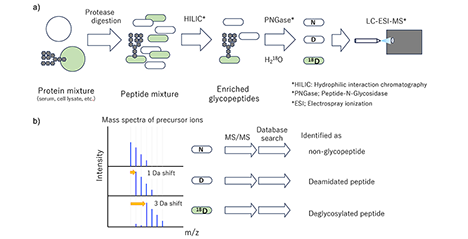
The Human Glycome Atlas Project (HGA) started in Japan in April 2023. This project will raise the level of glycan information availability, which has been remarkably low relative to that of other major biopolymers (nucleic acids and proteins). For this purpose, human glycan structures and their biosynthesis mechanisms will be comprehensively obtained within the HGA. Human glycan structures, together with clinical information and phenotypes, will be catalogued as individual data of a large population. This information will be stored in the knowledgebase TOHSA, and all researchers worldwide will be able to easily incorporate glycan information into their routine research. Thus, the HGA will give scientists a new vision of life and open a new era of life science. ...and more
